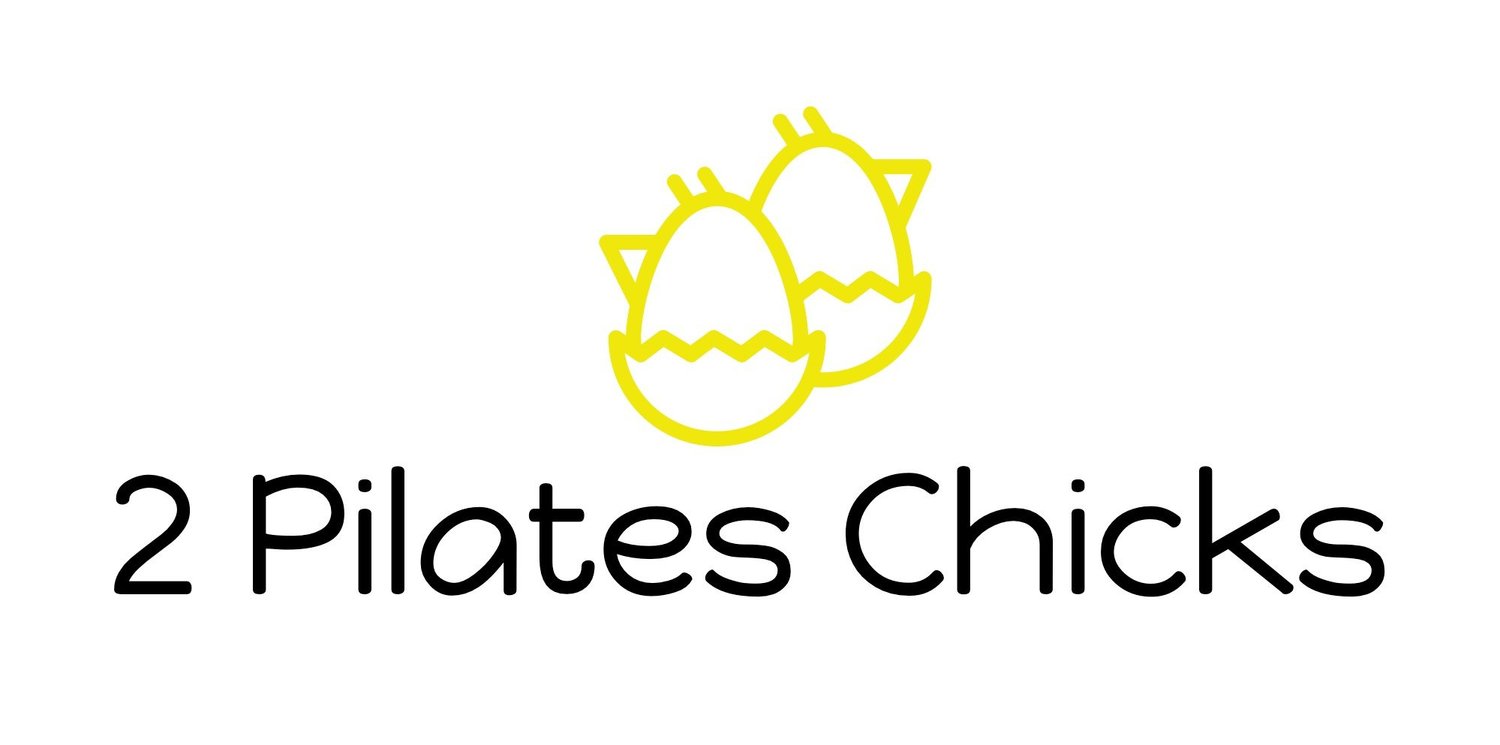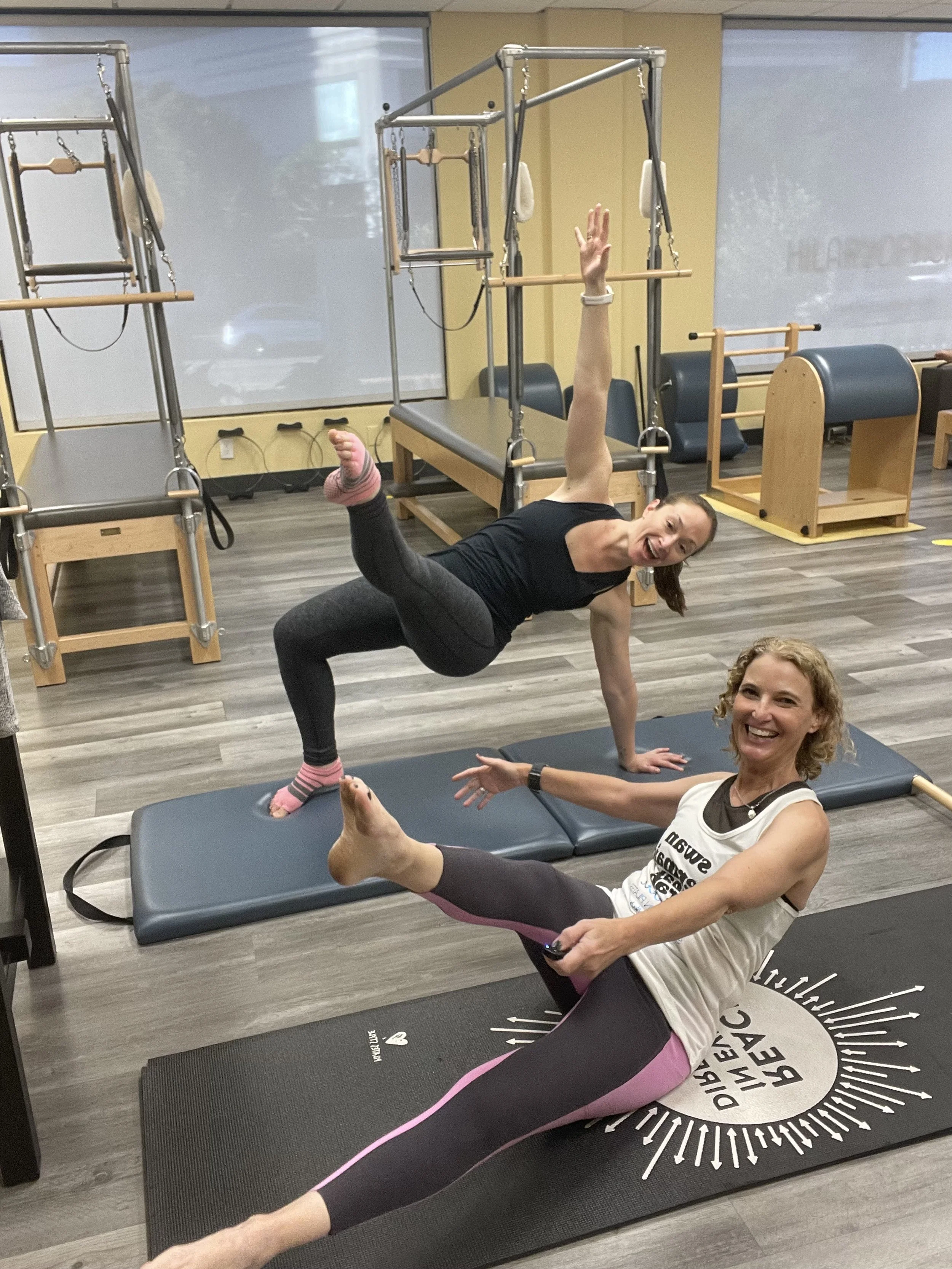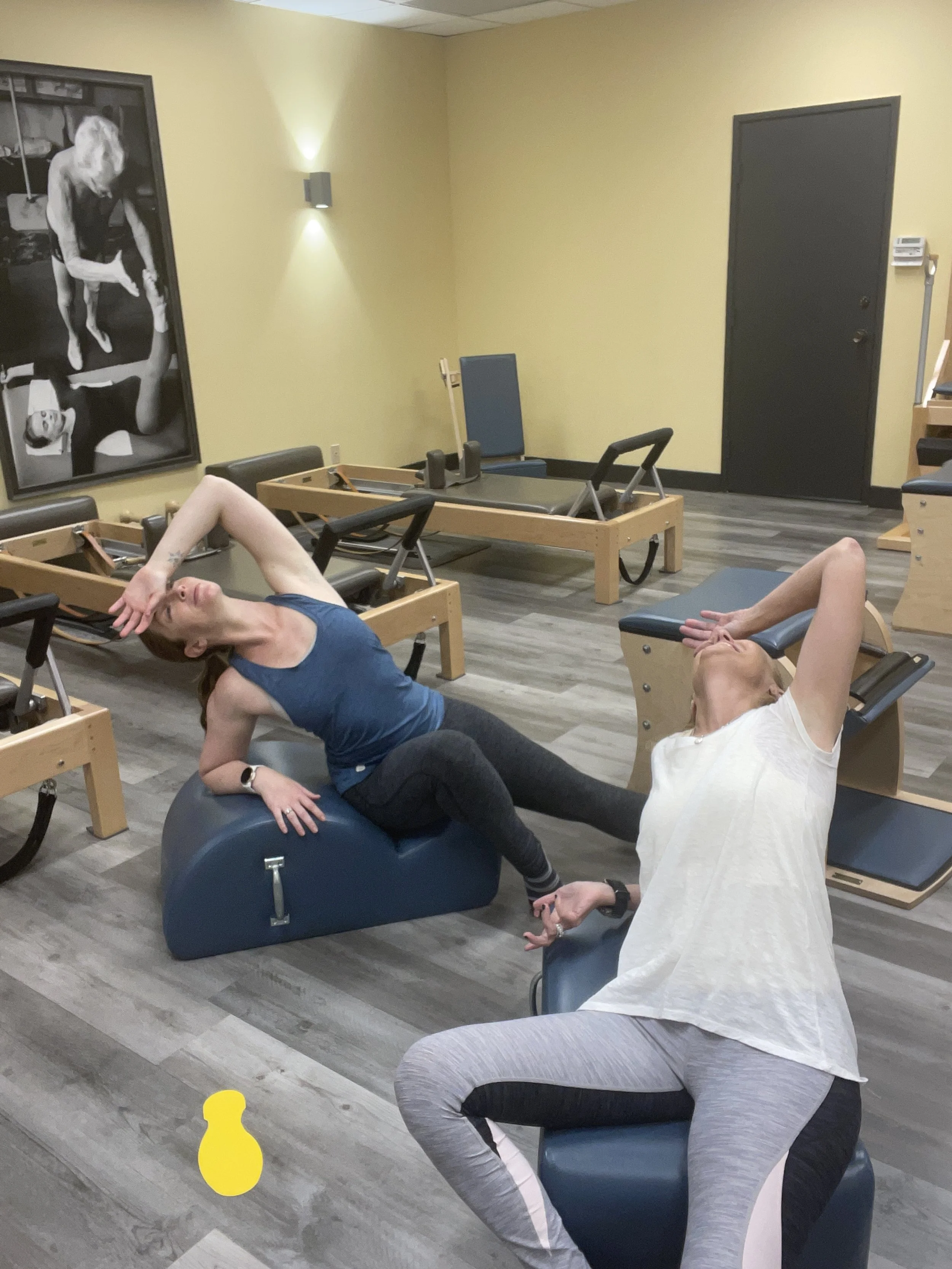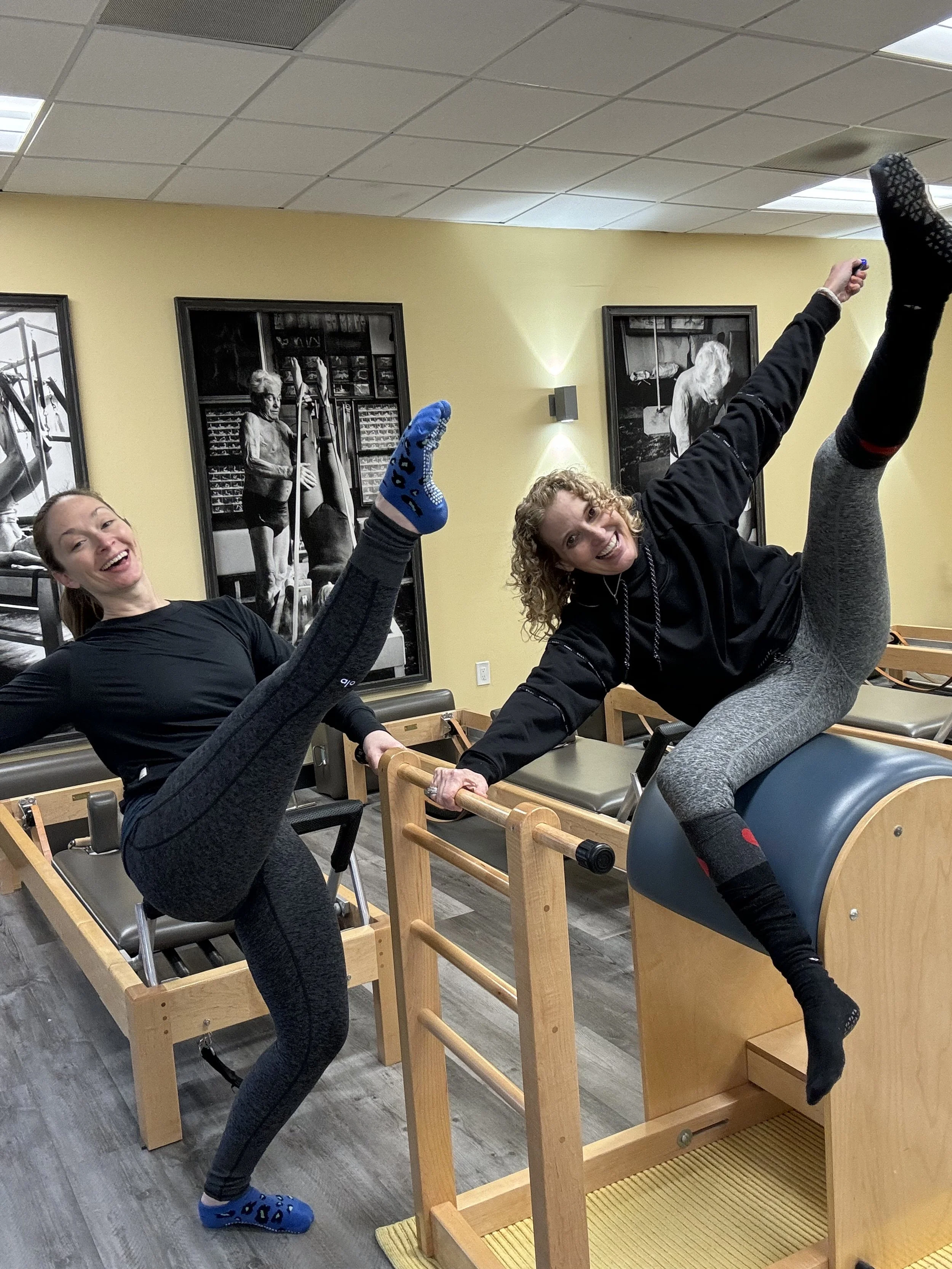What does "Pilates Circus" mean?
What do you think the phrase "Pilates Circus" means?
Have you seen the social media, trending reels, and Pilates challenges? Do you know if the videos are Pilates exercises or someone's studio experimentation? Is it safe or effective to teach to a client?
We've been calling the recent trends throughout the social media Pilates world the "Pilates Circus", as it has become more noisy and overwhelming for both teachers and clients seeing more acrobatics and fitness challenges emerging from Pilates teachers' social media accounts and company pages.
In our episode “The Pilates Circus”, Season 4 Episode 16, we decided to chat about the influential aspect of these videos and how we must ask Pilates teachers and Pilates companies to take a deeper consideration of what we're presenting online.
This is an important topic that the industry must pay greater attention to. Teachers throughout the Pilates industry have begun to more seriously discuss safety and responsibility for what is put out on social media, and how clients are being handled in sessions. Many practitioners, both teachers and clients alike, have been speaking up regarding these ideas recently as more risky behavior has been emerging in videos. As we’re seeing acrobatics presented on Pilates apparatus discussions have been opening up about injuries within Pilates that practitioners have suffered from classes, both from specific exercise choices and from instructors pushing clients to an extreme both verbally and physically hands-on, wanting clients to look a certain way from these videos.
From client injuries, and teachers forgetting teaching is about the client not about us, to overlooking basic precautions and equipment safety to achieve attention and gain followers, what does this do to our industry?
Primarily, we should question the purpose of any trending reels that may have those acrobatic movements on Pilates equipment. Just because a movement is done on Pilates apparatus does not mean it is a Pilates exercise. There are even archival classical Pilates exercises that are inadvisable to teach and are very acrobatic and unsafe for the majority of clients. Videos and posts can be entertaining but should not be used as educational material. Newer teachers and student-teachers can easily get confused as to what actually is Pilates and may assume they should learn some of these demonstrated exercises. However, these videos are simply for views and follower counts. They're entertainment.
As movement professionals we need to be aware of what we’re saying and who is listening. This is not to say we have to stick to classical Pilates, but rather that we need to think about safety in the studio. We are hearing about more injuries in Pilates sessions, both at an increasing rate and greater severity than ever before. So, we can have fun watching these videos but we can advise teachers to make disclaimers, just like medical professionals do, such as: “Don’t try this without a spotter”, “for experimental use only”, “not for client use”, etc. Acknowledging what is or is not a Pilates exercise is not to dictate strictly what counts as Pilates, but rather can elevate the industry to be trusted as intelligent fitness professionals and allied health practitioners, not “fitness influencers” who are not thinking about the greater impact of these videos.
For teachers, it can be helpful to question the purpose of any exercise before deciding to teach it to a client. A teacher should practice and deeply understand a movement before adding it to a session. To be a safe and effective Pilates teacher we must question:
Is this exercise safe for this individual?
What is the purpose or goal of this exercise? Does it align with what this client needs?
Why am I choosing to give this movement to this client?
Is this equipment made for this type of movement? Can this piece of equipment handle the type of load or force that this movement will need?
Is there a safer way to accomplish this exercise or goal?
Movement videos can be both entertaining and educational, but as movement professionals, we must make conscious choices as to how to teach and what to teach for every individual client, and weigh the pros and cons of practicing certain acrobatics or movements on the Pilates apparatus. Even with videos from trusted Pilates educational platforms, we need to be aware of the purpose of the exercise and understand if it is appropriate to give each client.
This is not a classical Pilates or what counts as Pilates issue that we also see continuously debated in the industry. This discussion concerns safety for clients and appropriately representing the Pilates industry as educated, thoughtful, and safe versus presenting acrobatics for entertainment and followers on social media accounts, especially on trusted sites with large followings and influence.
Many allied health professionals consider Pilates a safe and effective form of exercise and rehabilitation, so Pilates teachers are often trusted with vulnerable clients who need guidance. As teachers, we are guides for the client and work in collaboration with the individual we are teaching. If we can release the ego-driven "know all" mode teachers fall into, that we are telling the client what to do, or that how they look doing it somehow equates to our value as a teacher, these concerns of safety in the industry will be minimized. Instead of being concerned with a client getting bored or being entertaining enough in sessions, we can simply evaluate what each client needs. If we're worrying about entertaining clients, we're more likely to try teaching unsafe exercises that we've seen demonstrated in videos, simply to add variety to a session. Pilates is not about us as teachers, but rather about the individual we're teaching, and we must always teach the person in front of us.
Maybe a client is ready for some variety in their session. It can be beneficial and fun to work with a client toward being able to achieve a grand, exciting exercise over time. We can use building blocks and preparatory exercises to gradually assist the client in being able to do certain movements. Once they achieve a specific goal it is exciting for both the teacher and client. But, leading up to that grand finale we use appropriate building blocks and steps learning body placement, proper form, and effective effort to achieve the desired outcome. Any video we see in the social media circus is the final result of lots of practice with these building blocks, time to experiment, and many takes and outtakes. So, it is necessary to take the time to build up to any exercise to appropriately load the body and develop proper tissue tolerance.
The Pilates Circus can be fun; when we look at some of these videos, we can break down the elements and see the why or purpose of the exercise. We can find the part that may be appropriate to build with a client or our self-practices but we must first ask why, what is the purpose here?
A lot is going on out there online, on social media, and Pilates platforms, with many debates between teachers about it all. Regardless of what movement form we're teaching, we should ask ourselves if the exercise is appropriate for the individual, and what our goal is by giving this exercise to the client.
Be safe, think critically, and find the why of each exercise.
--





